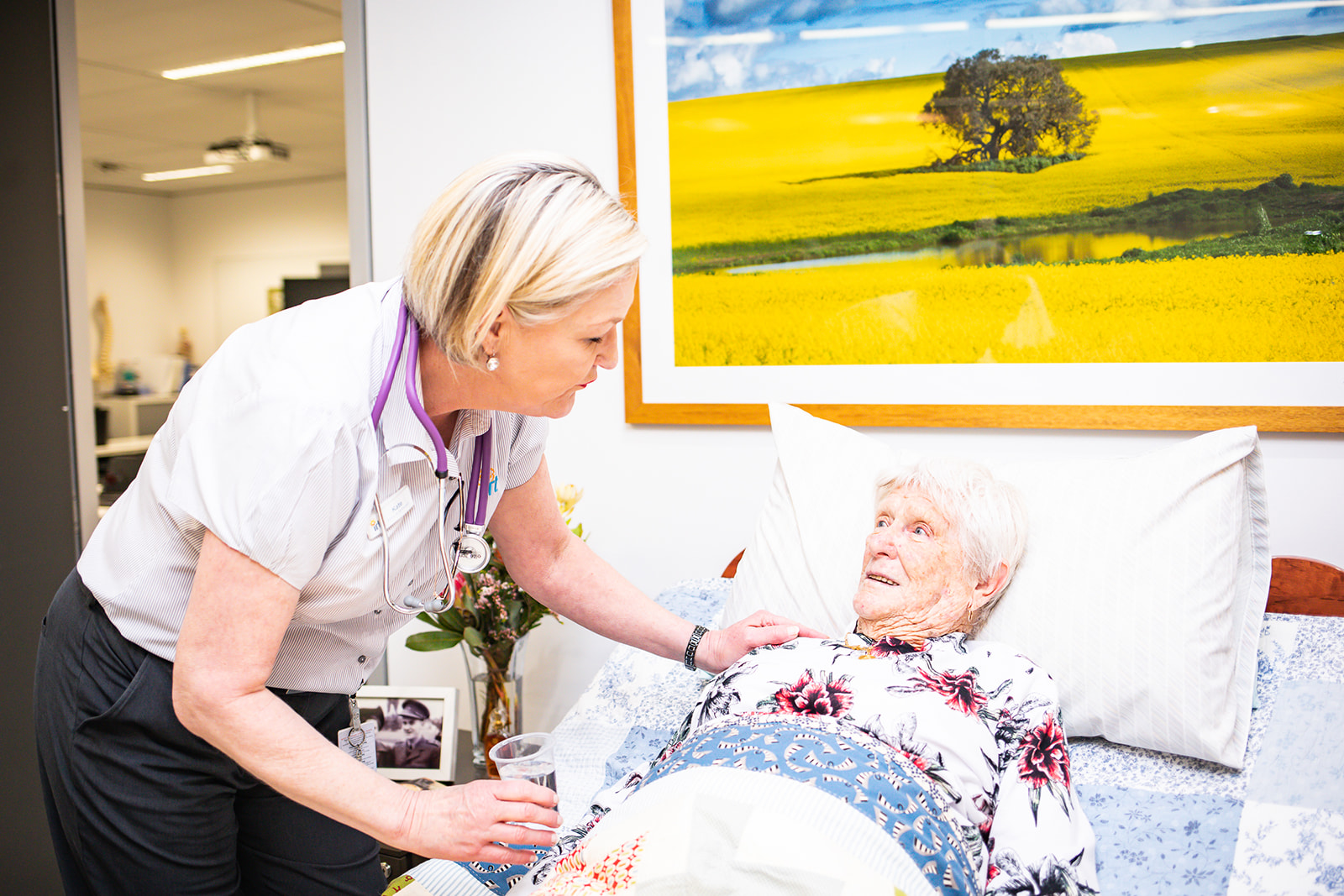10 ways to make your home dementia-friendly
Learn how the physical environment can be improved to support people living with dementia, whether it’s at home or in an aged care centre.

If you or your loved one has dementia, living at home can offer a sense of safety, security and independence.
However, the design and layout of a home can have a big impact on a person’s ability to continue living comfortably there. Symptoms of memory loss, confusion, and difficulty learning new things means that a person living with dementia may easily forget where they are, misplace items and struggle to recall how things work.
Although it’s not recommended to make major changes to the home overnight, there are some simple tweaks you can make to the physical environment at home that may support someone with dementia to continue living independently there for as long as possible.
Dementia-friendly environments at home
Let's face it; most homes were not originally developed to a dementia environmental design but here are 10 ways you can make your home more dementia-friendly:
1. Lighting
Good lighting helps you see clearly and make sense of where you are. It also helps to reduce the risk of falls.
Where possible, optimise the amount of natural light that gets into the home by having curtains or blinds open during the day. It’s also a good idea to ensure there is nothing blocking the windows that could cast shadows or reflections such as large trees or hedges outside, or bulky furniture inside.
Automatic light sensors are another simple addition to the home so that lights come on automatically when someone walks past the sensor. Light switches should also be easy to reach and clearly visible throughout the home.
2. Flooring
Take a walk around the home and remove anything that could cause you to trip over. Think about things like rugs and mats where the edges may slightly sit higher or curl up, and any other trip hazards like draft stoppers, cables or cords.
The best option is matte-flooring, which typically has a non-shiny and subtle appearance. Where possible, it’s best to choose a colour that contrasts with the walls to avoid confusion.
3. Labels
Labelling items around the home is another simple change to assist with daily living and can help with problems such as memory loss and disorientation.
For example, you could label cupboards in the kitchen to indicate where the cups, plates and cutlery are. You could also label other things around the home such as light switches, storage cupboards, taps (to indicate which is hot and cold) and remotes. Be sure to sure to use large, easy-to read font for any labels you create.
4. Minimise unhelpful stimulation
Unhelpful stimulation, such as excessive noise or bright lights, can distress and confuse those with dementia. Solutions to this may include leaving the television and radio off more often, and checking the suitability of décor placement around the home so that a wall mirror isn’t positioned in a place that will attract a bright reflection from the afternoon sun.
5. Outdoor safety
Installing handrails along stairs and ramps in the front and back yard can help with problems like coordination and mobility. Consider also removing obstacles from paths outside such as pots or hoses, moss and mould, loose gravel, and poisonous or spikey plants.


6. Supporting memory
Memory loss is common with people with dementia, but there are many ways to assist someone to remember things and find their way around. For example, if they have trouble remembering to do jobs, you can place a whiteboard in a central location and write daily tasks on it. If they lose their phone or keys easily, create a familiar place for them to put these items each day, and put reminders up in other parts of the house.
7. Introduce supportive aids
Supportive aids are devices or technology that can help someone with dementia manage their symptoms and live independently for longer. Some supportive aids to consider include; medication reminders and blister packs, item finders (such as alarms attached to keys), and therapeutic supports such as mechanical pets which can offer a person comfort.
Monitoring systems are another option to help notify loved ones or emergency services if a person is in trouble. Some devices can detect if a person has had a fall or determine their location if they go missing.
8. Heating and cooling
It’s important to keep the home at a comfortable temperature because a person living with dementia might not be able to judge the temperature themselves, or remember how to adjust their clothes if they are too hot or too cold. This could be achieved by setting a desired temperature or timer on an air conditioner or heater.
9. Reinforce the person’s sense of identity
Living areas are a good place to display photos, ornaments and memorabilia that trigger happy memories and reinforce the person’s sense of identity. Think about what photos or décor could help the person with dementia reflect on these positive memories (e.g. wedding photos, souvenirs from travelling, or gifts from loved ones). Be mindful of not creating too much clutter, though.
10. Offer opportunities for engagement
It’s important for a person living with dementia to continue enjoying activities that gives them a sense of belonging, purpose and relaxation. Many people enjoy creative hobbies such as playing a musical instrument, knitting, puzzles or painting, so it could be a nice idea to set up a knitting nook or puzzle table in the lounge room. Others enjoy social contact, so it is important to keep this up as much as possible.
Learn more about ageing in place.
"At IRT we have modified environments so the staff can see the residents much more easily from where they spend most of their time, allowing them to respond to the concerns of the residents from a position of calmness and control.”
Dementia-friendly environments in residential aged care facilities
Many residential aged care facilities, also known as aged care centres or nursing homes, are also rethinking environmental design to improve both the independence of residents living with dementia and enable staff to deliver optimum care.
Some of the dementia-friendly design principles that are being used in a residential care setting, such as IRT Aged Care Centres, include:
- installation of life-like garden murals to hide walls, fences and secure doors
- introduction of natural light
- colour coding of walls and skirting boards to minimise falls
- the use of intuitive visual cues to identify corridors and common areas such as the dining room and lounge room
- personalised door decals on residents’ bedrooms that replicate the appearance of the front doors of their former family homes so they know which room is theirs
- installation of improved wayfinding signage to help residents more easily navigate throughout the care centre.
There are many other design principles being implemented in residential aged care centres, and you can read more about them here. They are based on current research, knowledge and practical experience and will continue to develop as dementia care practice evolves with ongoing experience and research.
Further support
If you or a loved one is living with dementia and would like further support in this area, there are a range of resources available on the Dementia Australia website that can help you create a supportive and enabling environment at home, including:
- Video – this 25 minute video details how you can create a supportive and enabling dementia-friendly environment at home.
- Help sheets – there are a number of help sheets available for download on key design principles for dementia-friendly homes, how to introduce environmental cues in the home, the importance of support people, and how carers can support a loved one with dementia.
- App – the Dementia-friendly Home app is a user-friendly online resource that provides a range of ideas to make the home more accessible for people living with dementia. It offers everything from simple, inexpensive tweaks to the home, to bigger improvements (renovating physical environments).
If you still require support or further information it's a good idea to talk to your local health professional or General Practitioner who can refer to you a community health service or specialist to support your specific needs.

Aged care services with IRT
IRT are the leaders in person-centred dementia care. Our innovative Journey of Care model enables us to tailor our dementia care environments, equipment and programs to meet the unique needs of residents living with dementia.
Find out moreYou may also like
Palliative care vs end of life care: what's the difference?
What is palliative care? People think palliative care is the end of someone’s life, but there’s so much more to it.
Choosing an Aged Care Centre: What to consider
Moving from your home into a residential aged care centre can be a rewarding experience for you or your loved one.


